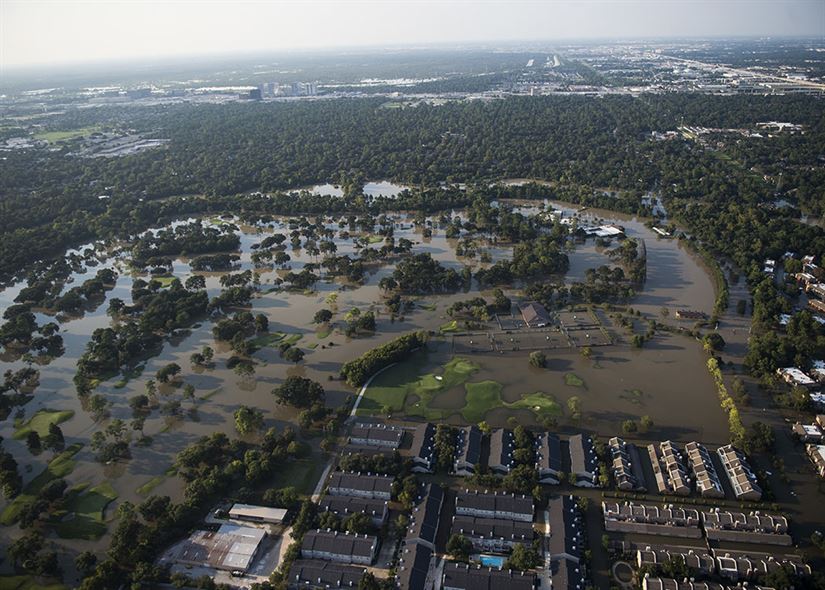 Could Philadelphia one day experience catastrophic flooding like Houston’s?Franco Montalto, PhD, a professor in Drexel’s College of Engineering who studies how cities can be better designed to withstand environmental challenges, including those associated with climate change and flooding — suggests that while Philadelphia’s development patterns and climate is very different from that of Houston’s, it has been luck, more than planning, that has kept the city from experiencing a compound flood – one that involves coastal surges and intense precipitation – in recent years.
Could Philadelphia one day experience catastrophic flooding like Houston’s?Franco Montalto, PhD, a professor in Drexel’s College of Engineering who studies how cities can be better designed to withstand environmental challenges, including those associated with climate change and flooding — suggests that while Philadelphia’s development patterns and climate is very different from that of Houston’s, it has been luck, more than planning, that has kept the city from experiencing a compound flood – one that involves coastal surges and intense precipitation – in recent years.
Montalto, who directs the North American Hub of the Urban Climate Change Research Network, recently explained, in an NPR StateImpact story, that even though Philadelphia is a much more compact city, it still has made some of the same urban design mistakes that Houston has. Namely, some low-lying marshy areas of the city were paved over to create residential neighborhoods. Because these neighborhoods are at low elevation, they are naturally where urban runoff wants to go when it rains; these are also the same areas that are inundated by storm surges and overflowing rivers.
“When you put development on top of low-lying wetlands, a few different outcomes can result. If you just replace the wetland surface with pavement or buildings, those areas will still receive the same offsite runoff during flood conditions. If you fill in the wetlands and raise the elevation before developing the lot, you will be forcing the water that would have gone to that spot under predevelopment conditions, to go somewhere else,” Montalto said. “The question becomes, how do we protect urban residents who live in former wetlands from the natural tendency of their neighborhoods to flood?”
And while Philadelphia hasn’t experienced a massive flood event on par with Houston’s, Montalto points out that parts of the city, including Eastwick, experience flooding quite frequently. Most of the floods that the city has seen have been due to either heavy rainfall or to storm surge from a rising ocean — but not both events at once. While it’s unlikely that Philadelphia would experience the same type of hurricane hit Houston, our city could get both extreme precipitation and a surge, and that could be particularly devastating.
“What’s really scary is when both of those things happen together, and you get surge and a lot of precipitation and the water just really has nowhere to go,” Montalto said. “And if you are in a place where there’s not a lot of topographic relief, you know a place like Eastwick, it could create a cover of water over the landscape, with the possibility of major damage.”
Montalto and other experts who lead Philadelphia’s climate preparedness and urban planning efforts note that the city has implemented stronger regulations that require storm water mitigation plans to include green spaces and permeable infrastructure — not just directing runoff. For his part, Montalto and a group of his students are leading an effort to make Eastwick more climate resistant by working with community members to create new storm water management programs and implement better urban design as the area continues to be developed.